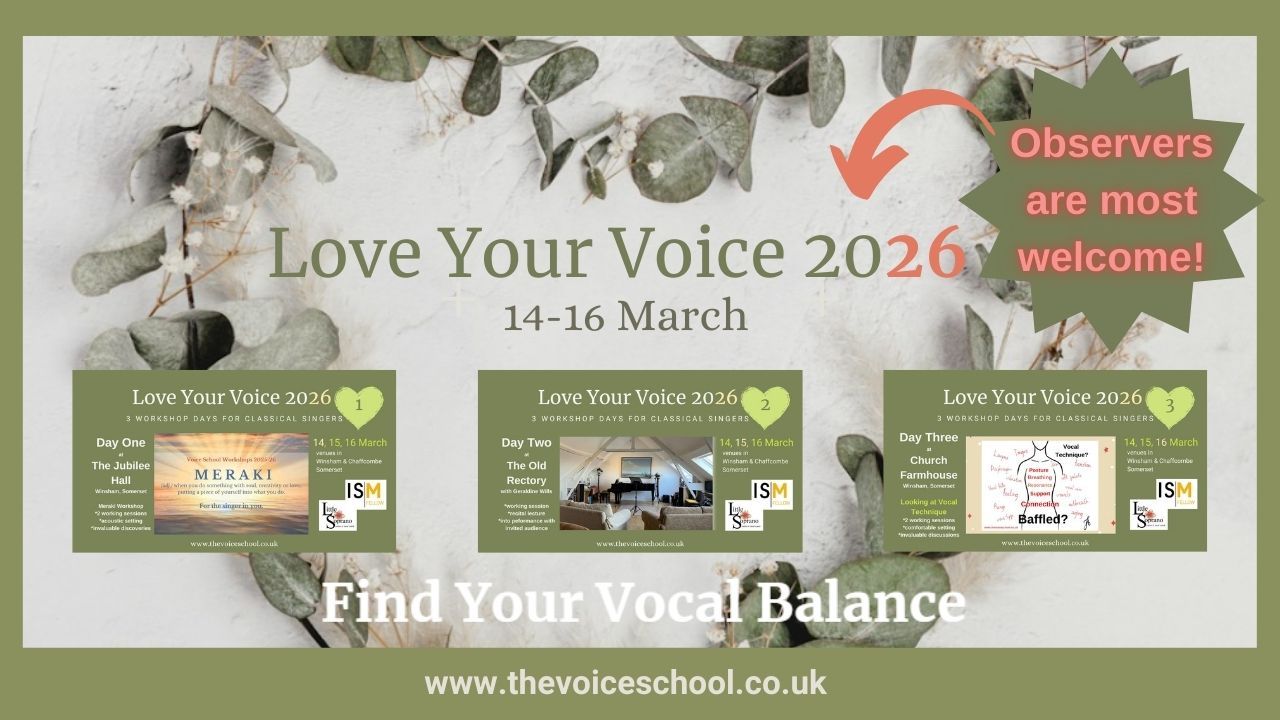Classical Singers: journey toward your true vocal tone.

The Vocal Journey: never forget the basics
The only way to progress your vocal learning healthily is to maintain a consistent gentle warm-up routine, covering basic and essential vocal technique tools such as posture, breathing/airflow, onset, lip trills, and sirening. The magic 5, learning by repeatedly doing. Neuroplasticity working its magic.
This video-share is #4 in a playlist on my YouTube channel. It's taken from my singers' mentoring group 2020 teaching archive. Most weeks throughout the year I lead members online in a Saturday Morning Vocal Technique LIVE where we explore exercises and enjoy a lively discussion as we work.
Learning about #vocalnutsandbolts is not a sprint - and we should never assume we’ve reached the journey’s end. Our destination is always there, just on the horizon.
A fascinating journey which still holds my attention after all these years of teaching and learning.
We classical singers are understandably primarily pre-occupied with the sound that we make as we sing- thinking mostly in terms of ‘range’ and ‘phrasing’, ideally underpinned by considerations such as 'airflow', ‘support’, ‘resonance’ and good use of vowels to carry the voice along - vocal amplification without a microphone.
Popular vocal technique issues regularly discussed within The Voice School groups are always linked to basic principles, learned and repeated throughout the learning curve, and incorporated into my teaching videos as shared on my YouTube channel.
These vocal basics are:
- Posture/Alignment
- Breathing/airflow
- Onset/start of the note
- Support/lip trills
- Resonance/Ng-hums
To simplify it further, from the sheer production of sound point of view, every singer needs to focus on three things.
But, what about your unique tone?
What can we do to enhance our individual sound, from the inside out?
Nasality, as an example. Where is that on the basic vocal technique map? It's universally accepted as undesirable and certainly does nothing to increase a voice's carrying power.
What might the remedy be?
Well - it's about getting to know and appreciate the role that your articulators play. Specifically (in the case of nasality) the velum or soft palate and growing awareness of your 'acoustic space'. On a basic level, the feeling of keeping the soft palate up out of the way, rather than down, so that all your sound escapes through the mouth and not down the nose.

Knowing your weakness is often your greatest strength.
Understanding where a fundamental vocal problem is triggered can achieve better results, leading the way to a totally different and more authentic sound, in most cases. We're still talking about your vocal tone, the quality of the sound you make.
Yet, getting to grips with the finer details of say, the articulatory system and perhaps where associated weak links can lurk, can be a bit vague - perhaps rather hit and miss, unless you get the guidance you need.

During the past year, acoustic space (honing your tone/resonance possibilities) has been a hot topic within my mentoring group, Virtually Vocalise. It has to do with an overall awareness of what we are vocally aiming to achieve, imagining the voice as an actual instrument, and how we can get the most out of its unique design.
As long as you learn how each component relates to you and the sound that you make - identify the culprits, the trips, and triggers that give rise to vocal difficulties, then you are taking some important steps towards a not only satisfying but healthy result in the long run.
Safeguarding our voices for a lifetime is the ultimate object of learning to sing well.

The author of this marvellous 'quotable' is David Jones, a highly regarded voice professional based in the US. I regularly read his posts and take heart from all that he writes in support of teachers like myself, including such like-minded wonderful gems as:
The Small Body-Connected Sound: It was during my study with Evelyn Reynolds that I learned the critical importance of the ‘hum’ function. I sometimes experience working with a singer who cannot hum with a released throat, so we must work on opening the acoustic space first.
And ...
My advice to any singer is to start the day with smaller sounds that also engage the body, like lip trills, or NG, or humming.
Such GOODness and food for thought!
You can learn more from David Jones here:
https://www.facebook.com/The-David-Jones-Voice-Studio-298599243590502
Curious about singing basics? Let's get you started with the right learning tools.
Download my free need-to-know vocal essentials guide for singers, vocal technique principles simply explained.







